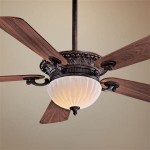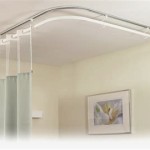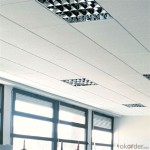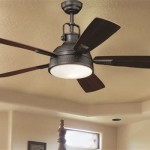Cover Popcorn Ceiling With Tiles: An Easy DIY Project for Beginners
Popcorn ceilings, a texturing technique popular from the 1950s to the 1980s, are now often viewed as dated and undesirable. Removing a popcorn ceiling can be a messy and labor-intensive process, potentially involving asbestos abatement depending on the age of the home. An alternative solution gaining popularity is covering the popcorn ceiling with tiles. This approach offers a cleaner, faster, and often more aesthetically pleasing result, particularly for homeowners seeking a manageable DIY project.
Covering a popcorn ceiling with tiles involves adhering decorative tiles directly onto the existing ceiling surface. This method effectively encapsulates the popcorn texture, eliminating the need for scraping and disposal. The result is a smooth, updated ceiling that can significantly enhance the overall look of a room. Furthermore, certain types of tiles can offer added benefits such as sound dampening and insulation.
Advantages of Using Tiles to Cover Popcorn Ceilings
Compared to traditional popcorn ceiling removal, covering with tiles possesses several distinct advantages. These advantages make it an appealing option for homeowners with limited renovation experience or those seeking a less disruptive solution.
First, it simplifies the process considerably. Scraping popcorn ceilings is a dusty and time-consuming task. Covering with tiles bypasses this step entirely. Preparation primarily involves ensuring the ceiling is clean and stable, rather than physically removing the texture.
Second, it minimizes mess and disruption. Removing popcorn ceilings generates a significant amount of dust and debris, requiring extensive cleanup and potential for damage to surrounding surfaces. Tiling, on the other hand, is a relatively clean process, especially when using peel-and-stick tile options.
Third, it offers design versatility. Tiles are available in a wide range of materials, patterns, and colors, allowing homeowners to customize their ceilings to match their desired aesthetic. From classic square tiles to intricate decorative designs, the possibilities are extensive.
Fourth, certain tiles offer practical benefits beyond aesthetics. Acoustic tiles can help reduce noise levels, while insulated tiles can improve energy efficiency. These functional advantages contribute to a more comfortable and enjoyable living space.
Choosing the Right Tiles for Your Project
The success of a tile-over-popcorn ceiling project hinges on selecting the appropriate tiles. Several factors should be considered when making this decision, including tile material, weight, installation method, and aesthetic preferences.
Tile Material:
Common tile materials include foam, PVC, mineral fiber, and metal. Foam tiles are lightweight and easy to cut, making them a popular choice for DIYers. PVC tiles are durable and moisture-resistant, suitable for bathrooms and kitchens. Mineral fiber tiles offer sound absorption properties, while metal tiles provide a sleek, modern look.Tile Weight:
Lightweight tiles are essential for adhering directly to a popcorn ceiling. Heavy tiles may not bond properly and could potentially fall. Foam and thin PVC tiles are generally the lightest options available.Installation Method:
Tiles are typically installed using either adhesive or a peel-and-stick backing. Peel-and-stick tiles are the easiest to install, requiring minimal tools and expertise. Adhesive-backed tiles may require a separate adhesive product and careful application.Aesthetic Preferences:
Tiles are available in a vast array of styles, colors, and patterns. Consider the overall design of the room and choose tiles that complement the existing décor. Samples should be obtained to assess color and texture in the actual lighting conditions of the room.Fire Rating:
This is a critical safety element. Ensure the tiles you select have the necessary fire rating and comply with local building codes. Flame spread and smoke development ratings are also crucial to review.Moisture Resistance:
If the area is subject to high humidity (e.g., a bathroom), choose moisture-resistant tiles to prevent mold and mildew growth. PVC or vinyl tiles are typically well-suited for bathrooms.Step-by-Step Installation Guide for Covering a Popcorn Ceiling with Tiles
Installing tiles over a popcorn ceiling is a straightforward process that can be completed by most homeowners with basic DIY skills. The following steps provide a comprehensive guide to ensure a successful project.
Step 1: Preparation.
Begin by thoroughly cleaning the popcorn ceiling. Remove any dust, cobwebs, or loose debris. If the popcorn texture is flaking or damaged, apply a coat of primer to stabilize the surface. Prior to installation, address any existing leaks or water damage to the ceiling.Step 2: Planning and Layout.
Measure the ceiling area and calculate the number of tiles needed. Consider the tile pattern and how it will align with the room's dimensions. For example, starting with a full tile in the center of the room and working outward can result in a more symmetrical and visually appealing layout.Step 3: Applying Adhesive (if applicable).
If using adhesive-backed tiles, apply the adhesive according to the manufacturer's instructions. Ensure even coverage to promote a strong bond between the tile and the ceiling. For peel-and-stick tiles, simply remove the backing and apply the tile directly to the ceiling.Step 4: Installing the Tiles.
Carefully position each tile and press firmly against the ceiling. Use a level to ensure the tiles are aligned correctly. If necessary, use a utility knife or tile cutter to trim tiles to fit around edges or obstructions. Precise measuring and cutting can optimize the final appearance.Step 5: Finishing Touches.
Once all the tiles are installed, inspect the ceiling for any gaps or imperfections. Use caulk or sealant to fill any gaps around the edges or between tiles. Clean any excess adhesive or sealant from the tile surfaces. Consider adding trim or molding around the perimeter of the ceiling for a finished look.Step 6: Addressing Outlets and Fixtures.
Before applying tiles over electrical boxes or light fixtures, turn off the power to the affected circuits. Carefully cut the tiles to accommodate the openings, ensuring a snug fit. Reinstall the outlets and fixtures after the tiles are in place. Check with a qualified electrician if unsure about handling electrical components.Tools and Materials Checklist:
The tools and materials required include tiles, adhesive (if applicable), utility knife or tile cutter, measuring tape, level, caulk or sealant (optional), ladder or step stool, safety glasses, and gloves. A chalk line or laser level can be useful for establishing straight lines and ensuring proper tile alignment.Addressing Potential Challenges and Concerns
While covering a popcorn ceiling with tiles is generally a straightforward project, certain challenges may arise. Addressing these potential concerns proactively can help ensure a smooth and successful installation process.
Ceiling Stability:
The existing popcorn ceiling must be structurally sound to support the weight of the tiles. If the ceiling is sagging or damaged, repairs may be necessary before installing the tiles. Loose popcorn texture can be addressed with a primer, as previously mentioned.Adhesion Issues:
Poor adhesion can lead to tiles falling from the ceiling. To prevent this, ensure the ceiling is clean and properly prepared. Use a high-quality adhesive and apply it evenly. Test a small area before installing the entire ceiling to verify adhesion.Cutting Tiles:
Cutting tiles to fit around edges or obstructions can be challenging. Use a sharp utility knife or tile cutter and take precise measurements. Practice cutting on scrap tiles before cutting the final pieces.Asbestos Concerns:
If your home was built before the 1980s, the popcorn ceiling may contain asbestos. In this case, professional asbestos abatement is recommended before undertaking any renovation work. Disturbing asbestos-containing materials can pose serious health risks.Weight Load:
Assess the ceiling's ability to bear the weight of the tiles. If in doubt, consult a structural engineer. Most lightweight tiles, like polystyrene or thin vinyl, will not overload a standard residential ceiling. Heavy tiles like natural stone are typically unsuitable. Consider the weight of the existing popcorn texture as well.Ventilation:
Ensure proper ventilation during installation, particularly when working with adhesives or sealants. Open windows and use fans to circulate air and minimize exposure to fumes. Adhere to the safety warnings specified on the product labels.By carefully planning and executing each step, homeowners can effectively cover their popcorn ceilings with tiles, achieving a refreshed and updated look for their homes. This DIY project offers a cost-effective and relatively simple alternative to traditional popcorn ceiling removal, providing a satisfying and aesthetically pleasing result.

How To Cover Popcorn Ceilings With Beadboard Step By Guide Shoe Makes New

How To Cover Popcorn Ceilings With Beadboard Step By Guide Shoe Makes New

How To Plank A Popcorn Ceiling

How To Cover Popcorn Ceiling 8 Creative Ways Making Maanita

How To Cover Popcorn Ceiling 8 Creative Ways Making Maanita

The Genius New Way People Are Hiding Their Popcorn Ceilings

How To Plank A Popcorn Ceiling

How To Cover Popcorn Ceilings With Beadboard Step By Guide Shoe Makes New

Decorative Ideas To Cover Popcorn Ceilings Artsy Rule

Budget Upgrade Good Bye Popcorn Ceiling Hometalk
Related Posts








